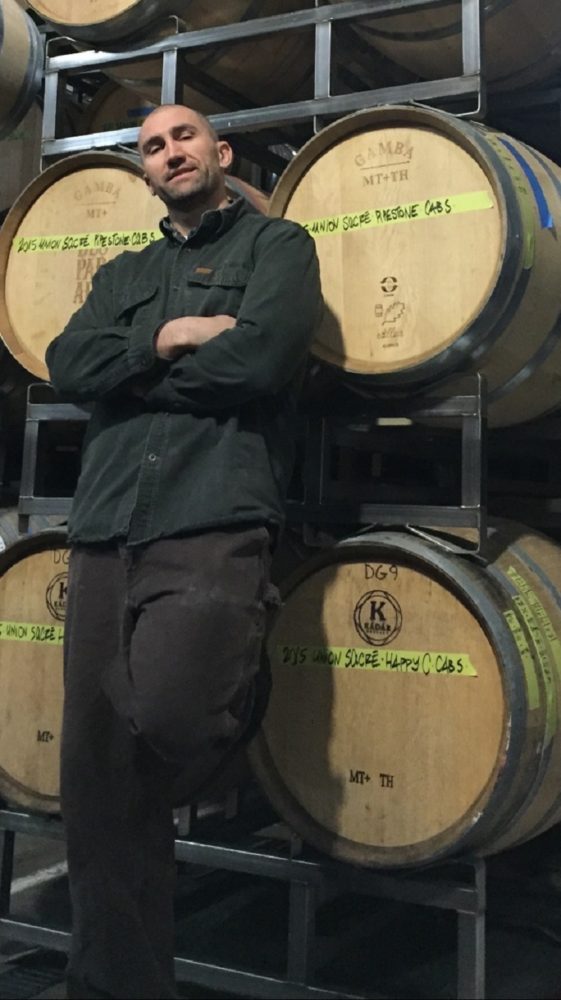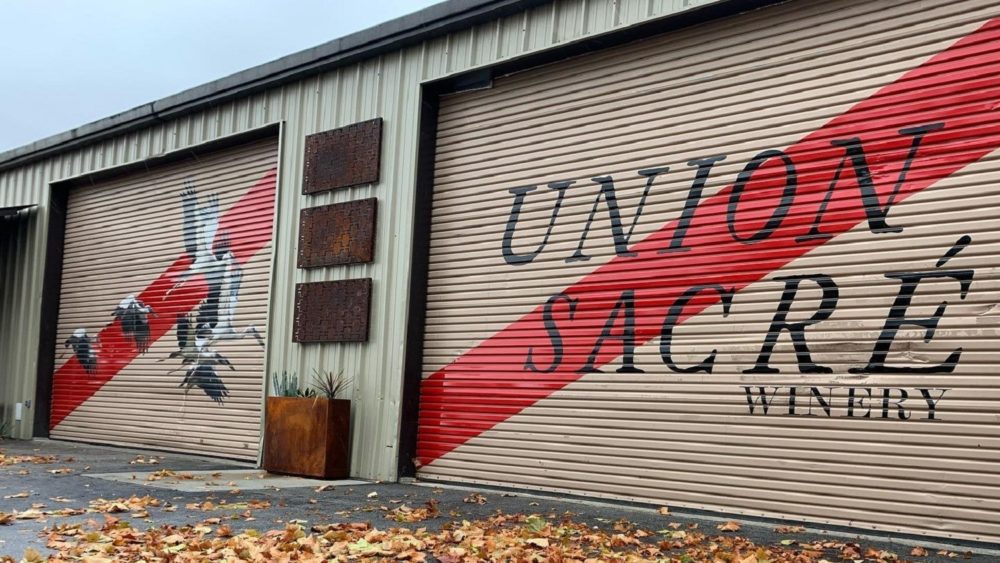
Humans like to identify things. Codify, classify, and compartmentalize them. It’s a way of creating order from chaos. This tendency of ours is evident everywhere we look.
Within the wine industry, we have taken it upon ourselves to codify attributes of the natural world to create appellations. Appellations are protected environments within the natural world where boundaries are imposed to infer greater value in the wines finding their provenance there. These man-made boundaries are based not only on geographic, climatic and geologic features, but on history, worth, singularity. We impose these hierarchies upon the natural world, and in return it responds with wines of place.
In the Santa Barbara County appellation (and the various sub-appellations within it), it is widely agreed upon that Pinot Noir, Chardonnay, Syrah, and other Rhône varieties like Grenache grow well there. In the Paso Robles appellation, which has within it eleven sub-appellations, Rhône varieties are typically relished for their simpatico relationship to the region’s soils and climate. Zinfandel and Cabernet Sauvignon have also been known to do well in Paso. In the Napa Valley, Cabernet Sauvignon is king. It appears Xavier Arnaudin, owner and co-founder of Union Sacré in Paso Robles, never received the memo about what should grow best where. He co-owns and operates California’s only entirely Alsatian house. He pursues the types of wines he’d like to drink and share with others, irrespective of where they come from or how recognizable they are to the average American consumer.
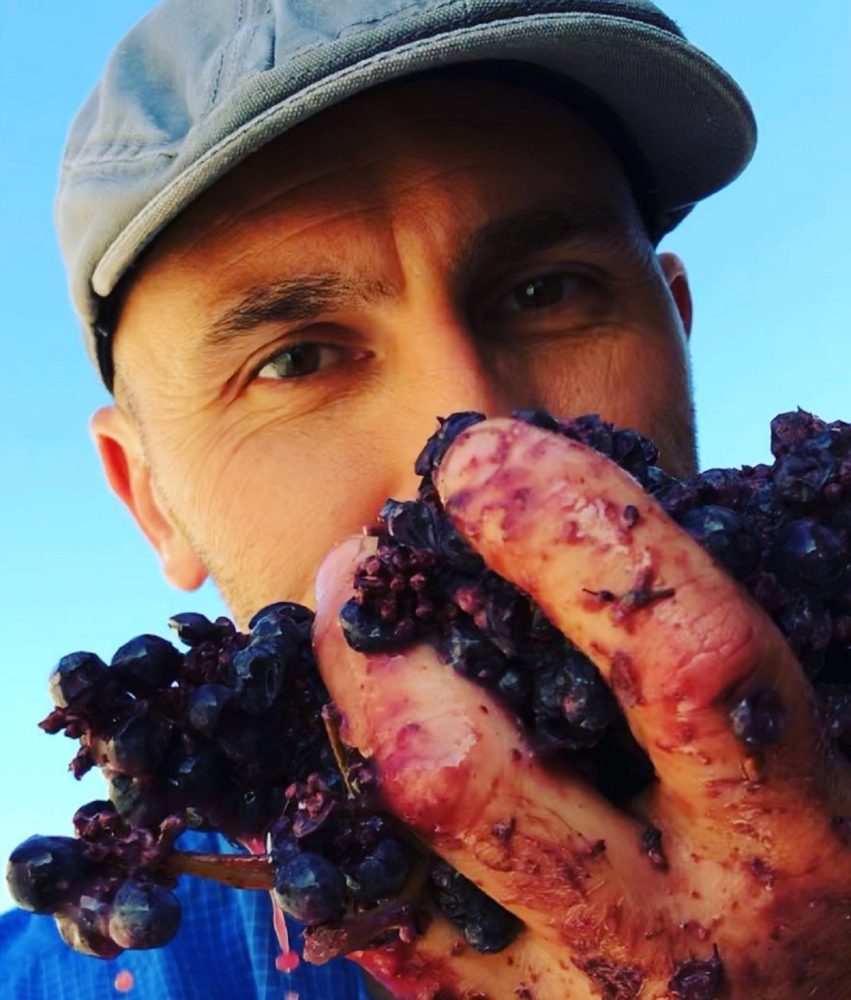
Arnaudin, who was born in the South of France and raised in the Northern Rhône, says – in a heavy French accent – “We try to bring a breath of fresh air with our wines. Acidity driven. I try to be respectful of the taste of the grape variety, but most importantly I want to bring a smile to your face when you finish these wines. These wines shouldn’t steal the show of the night. They are an extension of your day, of the social moment. They are there to be part of the party without being the hero. I hope we deliver pleasure on your table.” He is speaking as I follow him through his immaculate cellar. He walks with the off-kilter gait of someone familiar with heavy labor and long overdue for a vacation. The cellar is so cold I catch a chill, though it’s hot outside. By the time we arrive at an unadorned wooden table at which we’ll taste, I’m wishing I had brought a sweater.
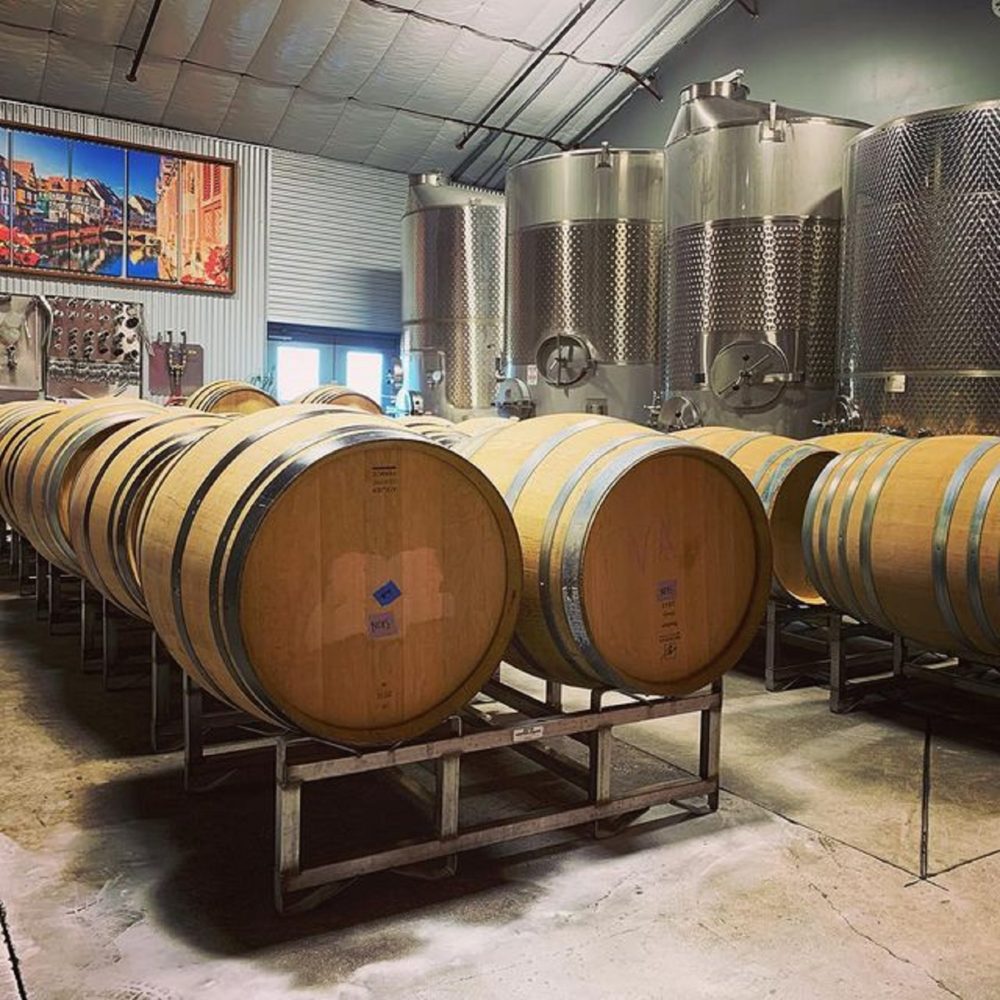
His mission statement reads, “These are not wines of privilege and power; these are wines made from a lifetime of labor for the untelevised tables that unite the very heart of the world.” It’s a heady mission statement for a small urban winery, but Arnaudin is confident in his vision and wines.
Affable and relaxed, Arnaudin forgoes small talk and immediately pours me his 2021 dry Sylvaner called “Nouvelle.” When I ask him about the name, he says, “It’s like the new girl in town. Mysterious. You don’t know a lot about her.” The story of this wine, and the others in this lineup, is completed in part by the arresting label that identifies it. Plainspoken on the front, the backside of the front label, viewed through the bottle, reveals a photograph of a young woman in a pastoral scene. Light, breezy and effortless, the photograph’s mood reflects the character of the wine. Flinty, peachy, and herbaceous, it’s sophisticated, yet laid back – easy to drink, with aromatics that nearly aviate out of the glass.
Sylvaner was first planted in California by German architect Emil Dresel, a colleague of Jacob Gundlach, founder of Gundlach Bundschu. The Dresel Vineyard was established in Sonoma County in the late 1850s. Up until 2008, when Scribe Winery re-established a Sylvaner vineyard at the original Dresel site, the only other plantings of Sylvaner were at Rancho Sisquoc in the Santa Maria Valley. These plantings date back to the early 1970s, long before the Santa Maria Valley appellation was established in 1981, and it is from here that Arnaudin gets his grapes. Though his winery and tasting room are in Tin City, the urban wine trail of Paso Robles, Arnaudin sources grapes from throughout the Central Coast, often from lesser-known sites. We move along to his sharp, fresh, dry Pinot Blanc from the Oasis Vineyard in the Santa Lucia Highlands. Arnaudin remains mostly quiet while we taste, his head bowed, his nose deep into his wine glass.
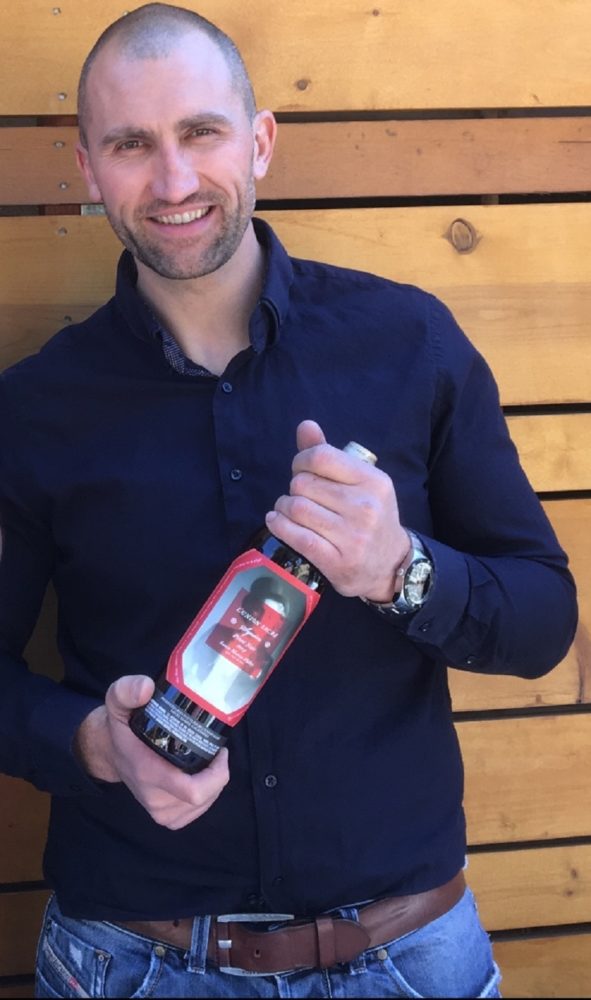
I’m reminded of the first time I met Arnaudin a few years ago, when I was working on the Paso Robles issue of my wine zine, Loam Baby. At the time, he struck me as somewhat ruminative and retiring, but for the glint of roguery in his eyes. After quite a few glasses of wine that evening, he finally opened up. “Paso reminds me of being a kid in France watching western movies,” he told me at the time. “These were the movies my grandparents were watching when I was 10 and there were just four channels, and we had a black and white TV with no remote. The only day we got to watch movies was on Tuesday night, because we had Wednesday off from school until we were 12. ‘Tuesday is ok’ is a saying in France (a lot like the TGIF here). But because there’s only four channels, there’s not much choice on what to watch. Channel 3 was the western movies. There were six of us in the house, because my grandparents spent the night so they could watch me on Wednesday.
“My grandma sat in a hard chair because she had a bad back, and my grandpa sat on a chair, too – even though he could have sat on the sofa – because he loved her so much. Those movies still taste so good to me. That’s America to me. The good, the bad and the ugly, etc.… Years later, I came to Paso. The first thing it reminds me of is the wild, wild west from those old movies. It’s one part fantasy, one part reality. Paso is the classic California from those films. Something is happening here; something will be happening here. There are cowboys, villains, hard-working people… There is industry, whiskey, wine, and women. There is a sense that something more is possible. There is some sense of justice, too, like if you work super hard to make something really, really good – not just good tasting and not just good selling, but really, really good – then you will succeed, and everything else will fall away.”
Flash forward a few years later, and the once nascent brand, Union Sacré, is now one of Paso’s most popular wine tasting destinations. Their visitors are mostly from Southern California and the San Francisco Bay Area, though they get their fair share of international travelers.
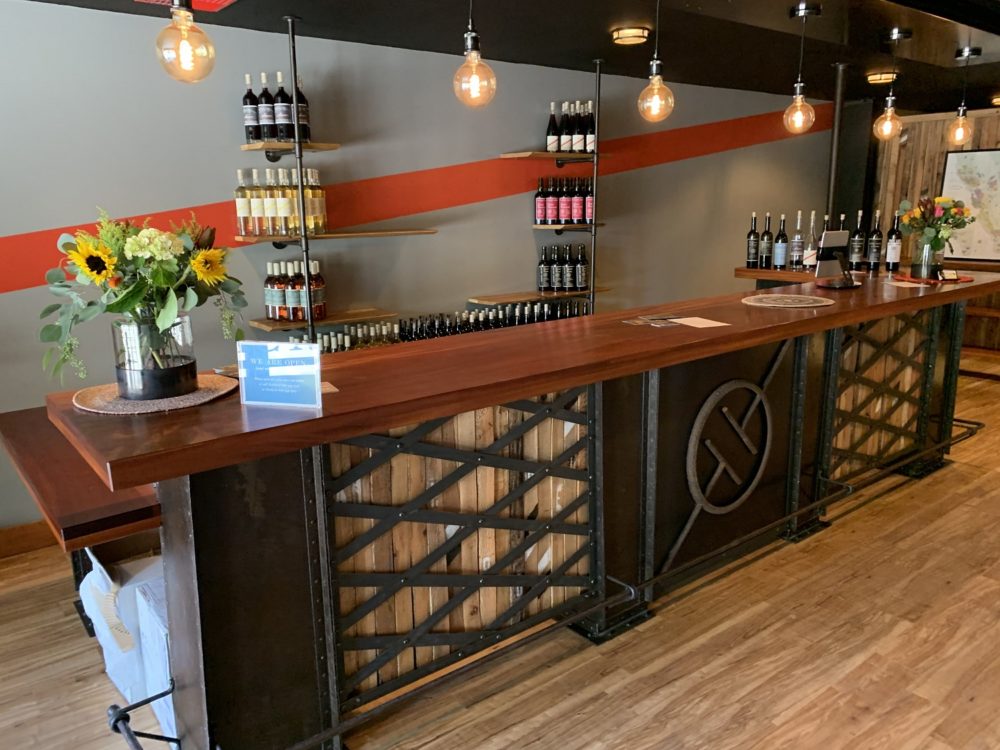
The few times I visit the tasting room while I’m researching Union Sacré, it’s hopping with young folks – two friends from LA’s Silver Lake neighborhood, a couple from Topanga Canyon, a young family from Marin County up north. Union Sacré has a robust following, despite – or perhaps because of – their mostly alternative portfolio of approachable wines.
Among the most popular is their L’Orangerie dry Gewürztraminer, and when Arnaudin pours me the 2021 vintage, I’m not surprised that it’s typically the first wine they sell out of each year. Sourced from Arroyo Seco, it is fermented on its skins for 40 days at 55 degrees. The resulting wine is an aromatic wonder, with chamomile, orange blossoms, blood orange pith, and saline breezes on the nose. It recalls a coastal orange grove on a cool day. It is unfiltered and utterly charming and singular. Arnaudin makes three Gewürztraminers in all – two dry and one off-dry. They’re all exceptionally balanced. Add to his collection of wines a dry Riesling, Pinot Gris, and Pinot Noir, and by the end of a tasting at Union Sacré, it really is as though one has spent an afternoon armchair-traveling through Alsace.
After tasting with Arnaudin, I’m inspired to check out the rest of Tin City. I stop at Etto, a nearby Italian market, to buy some freshly made pasta and homemade ragu sauce. I grab some locally made buffalo mozzarella, an organic bundle of basil, and a large heirloom tomato. There. Dinner for the evening is settled. I make a quick stop at the Negranti Creamery around the corner for a pint of fresh mint chip sheep’s milk ice cream (try saying that three times fast). There. Dessert is settled. I’m tempted to pull into a local brewery just yards away to grab a quick, cold pint, but instead I head home. Indeed, Arnaudin is right: something is happening here.
